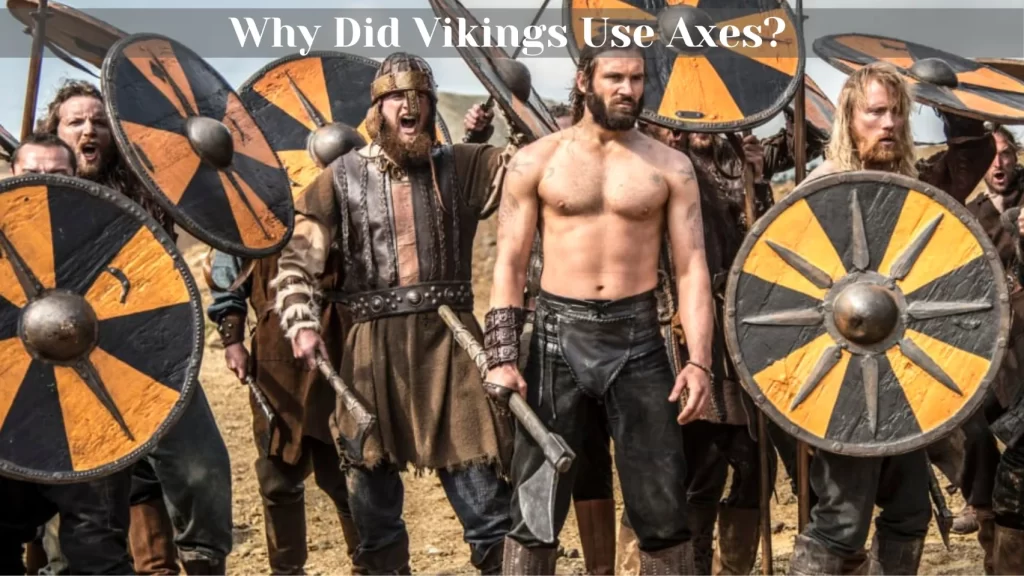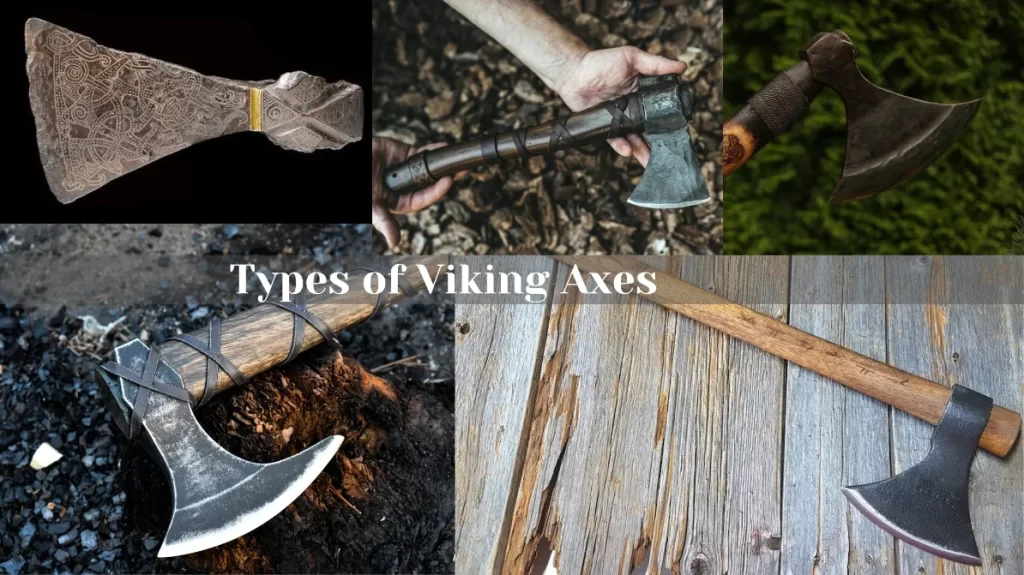Imagine a Viking warrior charging into battle with a fearsome double-bladed axe in his hands. He swings the axe with great force and skill, cutting down his enemies with ease. He looks like a formidable and unstoppable fighter, right?
Well, not exactly! The image of a Viking warrior wielding a double-bladed axe is a popular one, but it’s not correct historically? Then where did this myth come from, and why is it so widespread?
The double-bladed axe myth is a product of modern imagination and representation. It has no basis in Vikings’ historical or archaeological evidence. The double-bitted axe has appeared in many movies, games, books, and art works that depict the Vikings and their culture.
Today, we’ll examine the evidence for and against the use of double-bladed axes by Vikings, and will discuss the cultural significance of this weapon in Viking culture.

Contents
Did Vikings Actually Use Double-Bladed Axes?
The short answer is no. There is no archaeological or historical evidence that the Vikings ever used double-bladed axes in battle or in any other way.
The double-bladed axe, also known as the labrys, is a type of axe that has two symmetrical blades on both sides of the handle. It is often depicted in movies, games, books, and art as a weapon of choice for the fierce and fearless Viking warriors.
Vikings did not invent or use double-bladed axe. Actually, from the historical evidences, dual-edged axes were used by Minoans, Lydians, and Romans.
There are a few possible explanations for this. One possibility is that double-bladed axes were simply too impractical to be used in battle. It was not a suitable weapon for combat, especially for the Vikings, who preferred mobility, agility, and versatility in their warfare.
In addition, the two-bladed axe was too heavy, too cumbersome, and too unwieldy to be used effectively in battle. It required a lot of strength and skill to swing and control, and it offered no advantage over a single-bladed axe in terms of cutting or piercing power.
Read about the most expensive Viking weapon, and guess what? It’s not an axe!
Where Did the Double-Bladed Axe Myth Come From?
The myth of the Viking double-bladed axe is thought to have originated in the 19th century. During this time, there was a resurgence of interest in Viking culture, and many artists and writers began to depict Vikings as wielding double-bladed axes.
This image of the Viking double-bladed axe was further popularized by movies and television shows in the 20th and 21st centuries. As a result, many people today have the misconception that Vikings commonly used double-bladed axes in battle.
Some examples are the 1958 film The Vikings, the 2013 video game Assassin’s Creed IV: Black Flag, the 2014 novel The Last Kingdom, the 2016 TV series Vikings, and 2022 TV series Vikings: Valhalla. These works have influenced the public perception and fascination with the Vikings and their weapons, but they have also distorted and exaggerated the reality.
Other Myths and Facts Related to Vikings and Their Axes
The double-bladed axe myth is one of the many myths and misconceptions that surround the Vikings and their weapons. Some of the other myths and facts are:
Myth: The Vikings used axes with blood grooves to drain the blood of their enemies.
Fact: The blood groove, also known as the fuller, is a groove or channel that runs along the blade of some axes and swords. It is not designed to drain blood, but to reduce the weight and increase the stiffness of the blade.
Myth: The Vikings used axes with curved blades to hook and pull their enemies closer.
Fact: The curved blade, also known as the beard, is a feature of some axes that extends the lower edge below the haft. It is not designed to hook and pull, but to increase the cutting surface and to hook onto shields or weapons.
Myth: The Vikings used axes with runes to enchant and curse their weapons.
Fact: The runes are the ancient writing system of the Norse and other Germanic peoples. They are not magical symbols, but letters that represent sounds and words. The Vikings sometimes inscribed runes on their axes and other objects, but not to enchant or curse them, but to mark ownership, commemorate events, express sentiments, or invoke protection.
No matter if your axe is single bladed or double bladed, you should check this guide to care for your handmade axe.
Conclusion
Now you know the truth behind the myth – the Vikings used double-bladed axes. The main finding of this article is that Vikings did not actually use double-bladed axes. The myth of the Viking double-bladed axe is thought to have originated in the 19th century. It was further popularized by movies and television shows in the 20th and 21st centuries.
While Vikings did not actually use dual bladed axes in battle or any other way, the weapon has become a popular symbol of Viking culture in popular culture.
Frequently Asked Questions
What types of axes did Vikings predominantly use?
Vikings predominantly used single-bladed axes with specific designs, such as the bearded axe and the Dane axe. These were prized for their practicality and combat effectiveness.
What archaeological evidence supports the use of double-bladed axes by Vikings?
Archaeological findings have revealed some double-bladed axeheads, indicating their existence in Viking history. However, they are relatively rare compared to single-bladed axes.
Why are double-bladed axes so popular in popular culture?
Double-bladed axes are popular in popular culture because they are seen as a symbol of Viking strength, power, fearsome, and ferocity.



